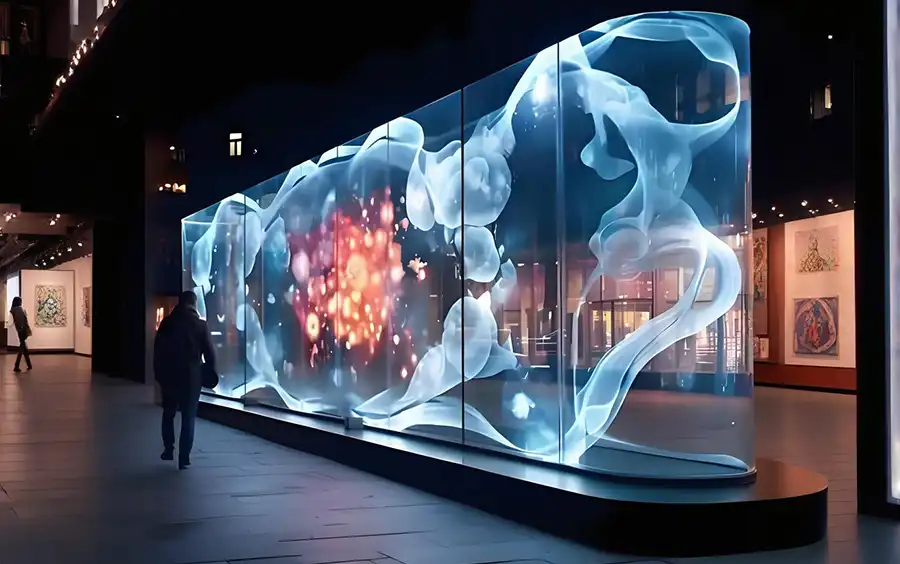
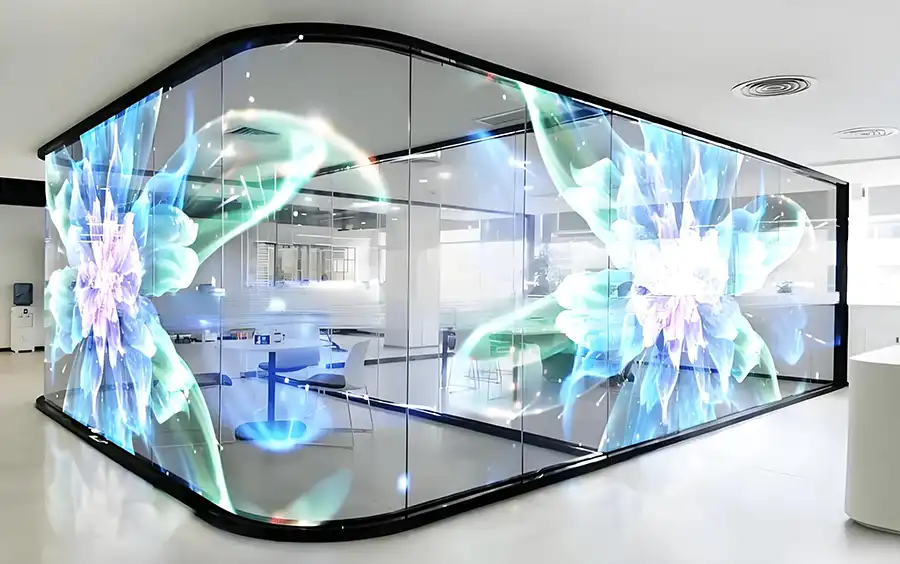
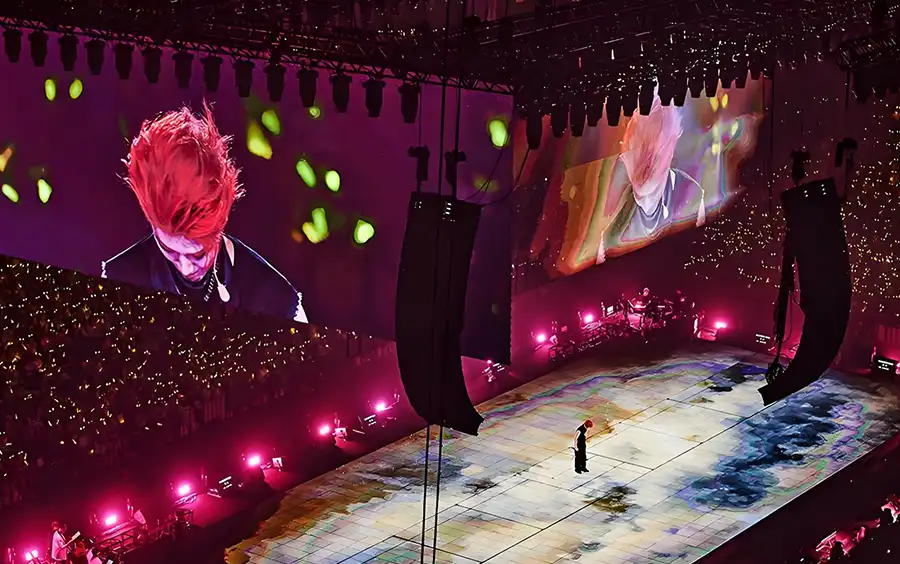
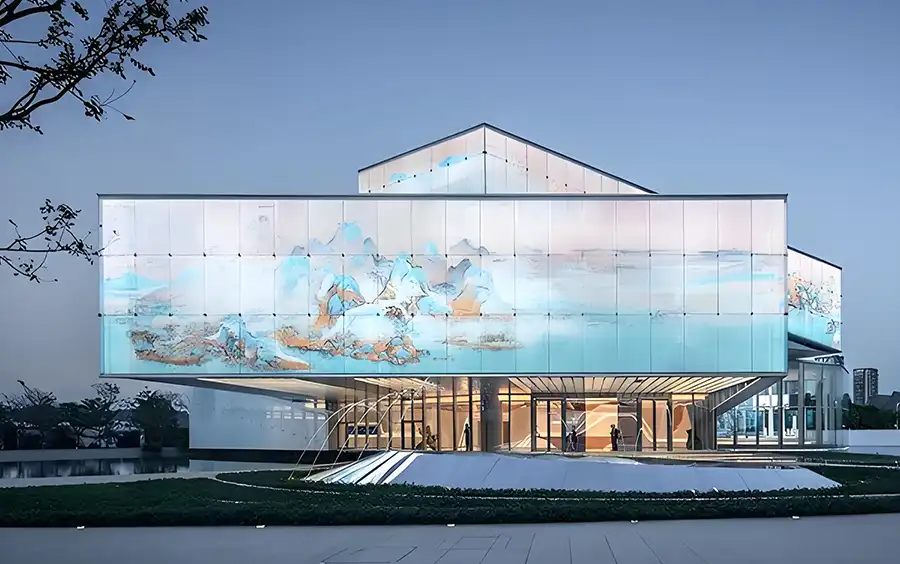
A Transparent LED Display is a digital signage solution that allows viewers to see both the video content and the background behind it.
Sometimes called an LED Window Display, LED Transparent Screen, or See-through LED Wall, it uses ultra-thin LED strips and transparent PCBs to achieve up to 70–90% transparency while maintaining high brightness.
This makes it ideal for storefronts, glass curtain walls, and interior glass partitions where openness and visibility are essential.
The Transparent Crystal Film Screen seamlessly blends high-performance LED technology with unparalleled transparency. This versatile solution offers exceptional appearance, easy installation, customiz
Have you ever imagined watching a movie or a video on a screen that is completely transparent, without any frames or borders, and that can create stunning 3D effects without the need for glasses? If y
REISSDISPLAY’s transparent LED display screen unleash the power of transparency, boasting 60-85% transparency for a virtually invisible display. Compact at 8 cm thick and 8 kg/m², the frameless design
REISSDSPLAY TIT-TF Series LED Transparent Screen is a cutting-edge display solution, often referred
Rental Transparent Mesh LED Screens offer flexible, high-impact solutions for temporary events. With
Contact us today to receive a personalized quote tailored to your needs.
A transparent LED film glass wall transforms ordinary glass into a digital showcase. With high transparency and flexible installation, it delivers vivid visuals without sacrificing aesthetics, perfect for retail windows, corporate lobbies, and public spaces.
Installation Methods for LED Window DisplaysDepending on the window layout and screen type, ReissDis
Installation Methods for Retail Window ApplicationsInstallation depends on store layout and display
ReissOpto transparent LED technology offers a perfect balance between brightness, transparency, and energy efficiency. Each LED Transparent Panel is carefully designed for professional visual applications in modern architecture and retail spaces.
Up to 70–90% light transmittance for glass facades and shop windows
Weighs only 7–12 kg/m² with ultra-thin panels for easy mounting
5,000–6,500 nits ensure clear visibility even in daylight conditions
Advanced power design saves 35–60% energy compared to traditional LED displays
Modular design supports custom shapes and curved glass applications
Designed for 100,000-hour lifespan with IP65 weather protection options




ReissOpto manufactures multiple Transparent LED Panel models tailored for indoor and outdoor environments.
Each panel differs in pixel pitch, transparency, and brightness to suit viewing distances and lighting conditions.
| Model | Pixel Pitch | Transparency | Brightness (nits) | Application |
|---|---|---|---|---|
| RST-P2.8 | 2.8mm | 65% | 5500 | Indoor LED Transparent Film Screen for retail displays |
| RST-P3.9 | 3.9mm | 75% | 6000 | LED Window Display for shops and exhibitions |
| RST-P7.8 | 7.8mm | 85% | 6500 | Glass LED Display for large mall facades |
| RST-P10 | 10.0mm | 90% | 7000 | Outdoor Transparent Video Wall for architecture & airports |
All models support both front and rear maintenance, high refresh rate (>3840Hz), and seamless splicing for large video walls.
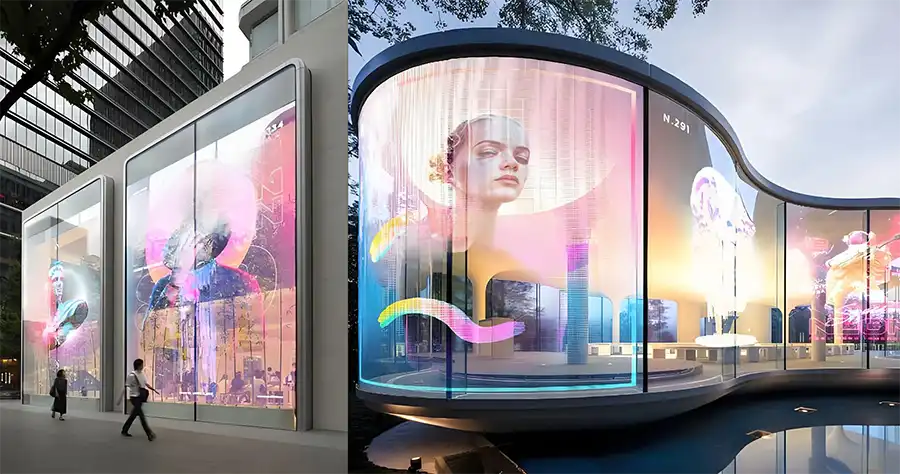
ReissOpto’s LED Transparent Panel Technology integrates precision SMD LED chips, high-transmission PCB materials, and intelligent driver ICs.
This ensures flicker-free visuals, perfect color uniformity, and high transparency for both commercial and architectural applications.
Advanced driver ICs for high refresh rate and smooth video playback
Optical-grade transparent PCBs and clear mask design
Supports LED Transparent Film Screens and mesh LED curtain systems
Modular structure for easy maintenance and scalability
The result is a clear, lightweight, and energy-efficient transparent LED display suitable for a wide range of installations.
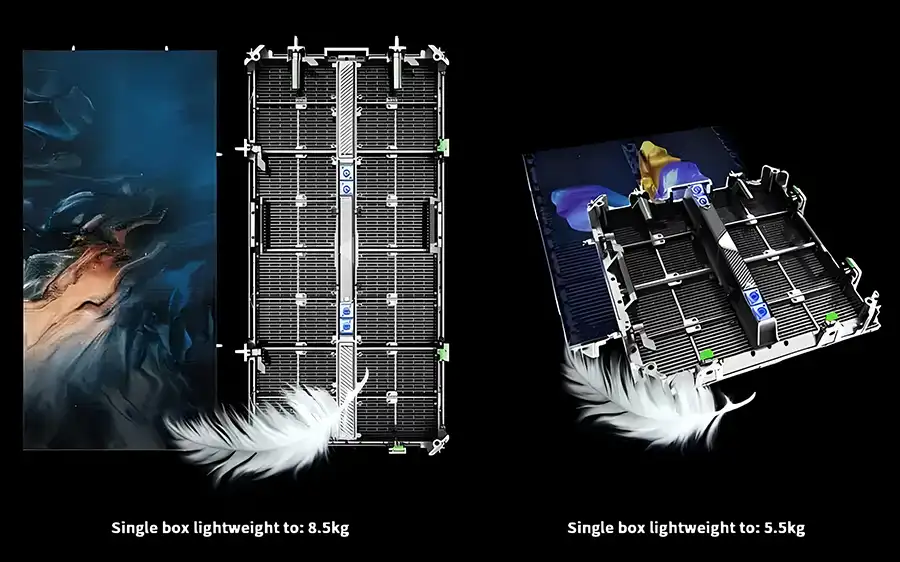
ReissOpto provides fully customized transparent LED displays to match creative architectural designs and complex installations. Our flexible LED modules can be shaped into various forms, giving designers complete freedom to create distinctive and eye-catching structures.
Customizable into square, triangle, circle, cylinder, and other irregular shapes
Supports arc bending and curved surface installation
Modular connection system for seamless creative splicing
Lightweight, transparent structure ideal for 3D LED sculptures and artistic façades
OEM/ODM customization available for complex design projects
From curved glass walls to artistic transparent video installations, ReissOpto’s flexible transparent LED panels make it possible to turn any architectural concept into a vibrant digital experience.
While traditional LED displays offer solid image performance, Transparent LED Screens redefine visual communication by combining digital brightness with architectural transparency. Unlike conventional opaque LED walls that block light and space, Transparent LED Displays allow up to 90% light transmission — maintaining openness, aesthetics, and energy efficiency. This makes them ideal for glass façades, retail windows, and creative architectural applications where modern design and visual impact must coexist.
| Feature | Transparent LED Display | Traditional LED Screen |
|---|---|---|
| Transparency | 70–90% (See-through) | 0% (Opaque) |
| Weight | 7–12 kg/m² | 25–40 kg/m² |
| Brightness | 5000–7000 nits | 5000–8000 nits |
| Energy Use | 35–60% lower | Standard |
| Maintenance | Front or rear | Rear only |
| Application | Glass walls, retail windows | Solid walls, stages |
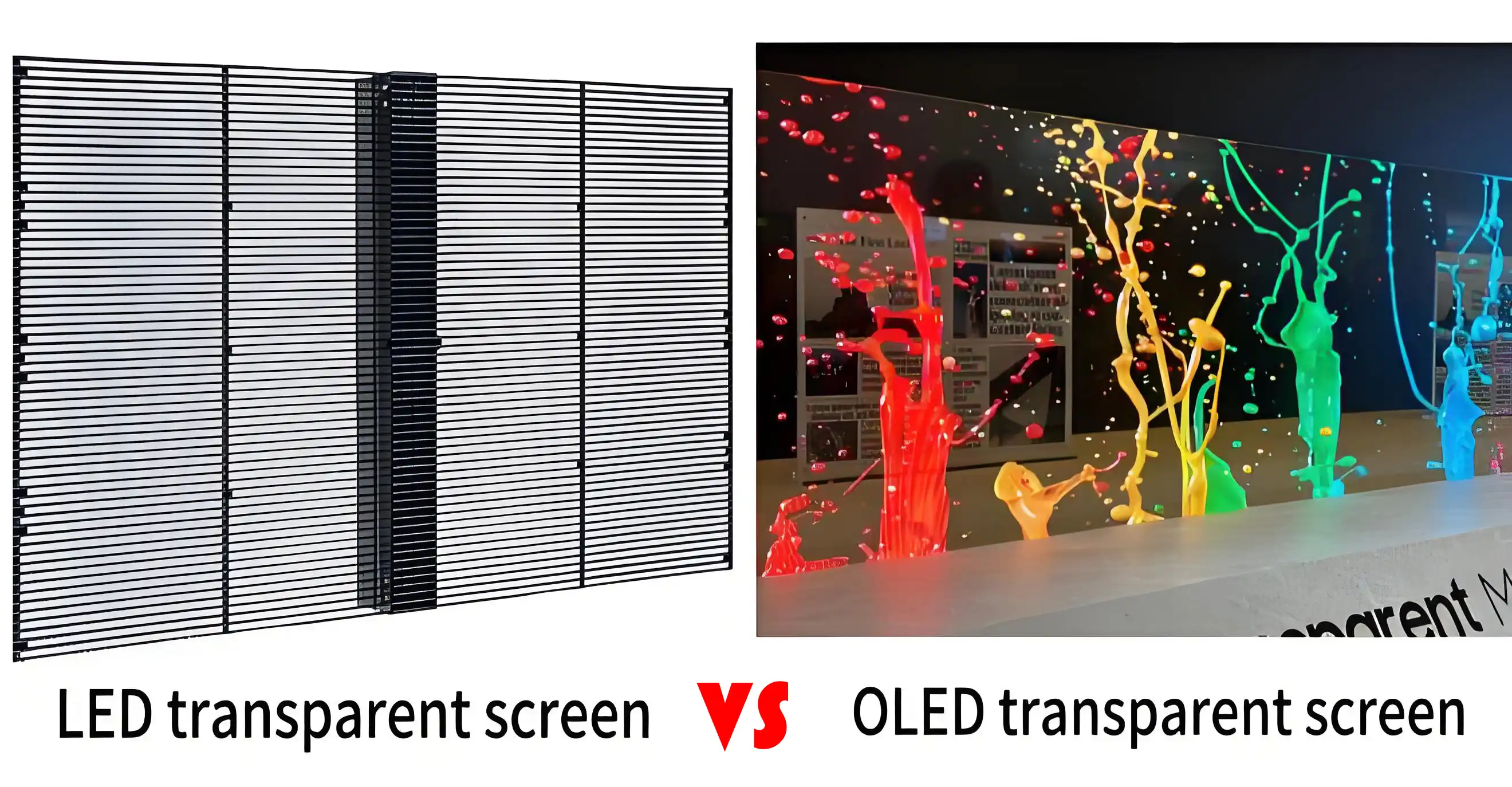
Selecting the right Transparent LED Display depends on the application, viewing distance, and environment.
Use the guide below to find the ideal model for your project.
| Application | Recommended Model | Transparency | Brightness | Viewing Distance |
|---|---|---|---|---|
| Shop Windows | P2.8 – P3.9 | 65–75% | 5500–6000 | 3–10m |
| Shopping Malls | P3.9 – P7.8 | 75–85% | 6000 | 8–20m |
| Building Facades | P7.8 – P10 | 85–90% | 6500–7000 | 20–50m |
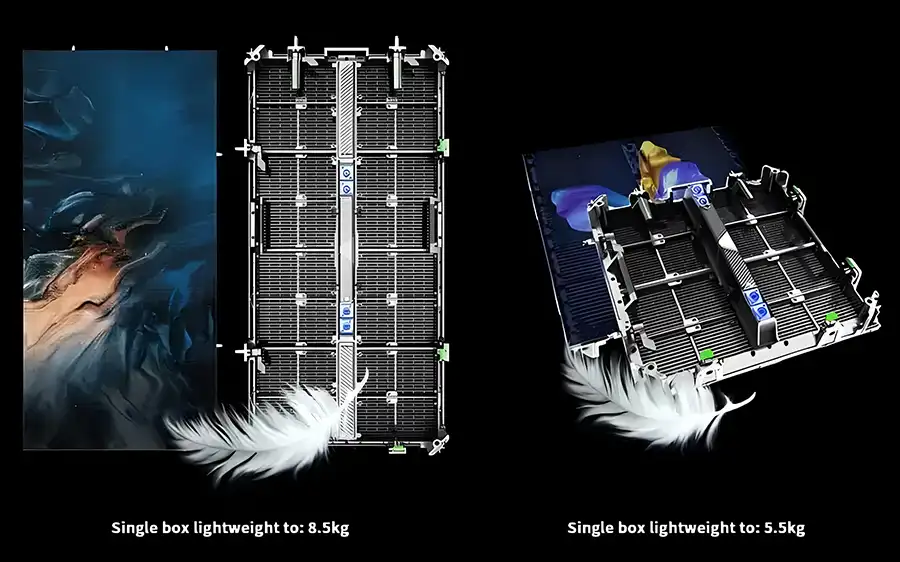
Transparent LEDs are lightweight, see-through, and designed for indoor or semi-outdoor glass structures. Traditional LED walls are heavier, opaque, and meant for large indoor/outdoor applications.
Yes, certain models are IP-rated for semi-outdoor or outdoor use.
Around 100,000 hours, depending on usage and environment.
Yes, avoid full white backgrounds, use bold colors and high contrast to maximize clarity.
Absolutely. Most models support front or rear maintenance, and modules can be replaced without disassembling the entire display.
If you are interested in our products, please contact us promptly
Reach out to our sales team to explore customized solutions that perfectly meet your business needs and address any questions you may have.
Email Address:info@reissopto.comFactory Address:Building 6, Huike Flat Panel Display Industrial Park, No. 1, Gongye 2nd Road, Shiyan Shilong Community, Bao'an District, Shenzhen city , China
whatsapp:15217757270